Pharmacokinetic/pharmacodynamic integration and modelling of oxytetracycline for the porcine pneumonia pathogens Actinobacillus pleuropneumoniae and Pasteurella multocida
(2017)
Journal Article
Dorey, L., Pelligand, L., Cheng, Z. R., & Lees, P. (2017). Pharmacokinetic/pharmacodynamic integration and modelling of oxytetracycline for the porcine pneumonia pathogens Actinobacillus pleuropneumoniae and Pasteurella multocida. Journal of Veterinary Pharmacology and Therapeutics, 40(5), 505-516. https://doi.org/10.1111/jvp.12385
Pharmacokinetic–pharmacodynamic (PK/PD) integration and modelling were used to predict dosage schedules of oxytetracycline for two pig pneumonia pathogens, Actinobacillus pleuropneumoniae and Pasteurella multocida. Minimum inhibitory concentration (M... Read More about Pharmacokinetic/pharmacodynamic integration and modelling of oxytetracycline for the porcine pneumonia pathogens Actinobacillus pleuropneumoniae and Pasteurella multocida.
